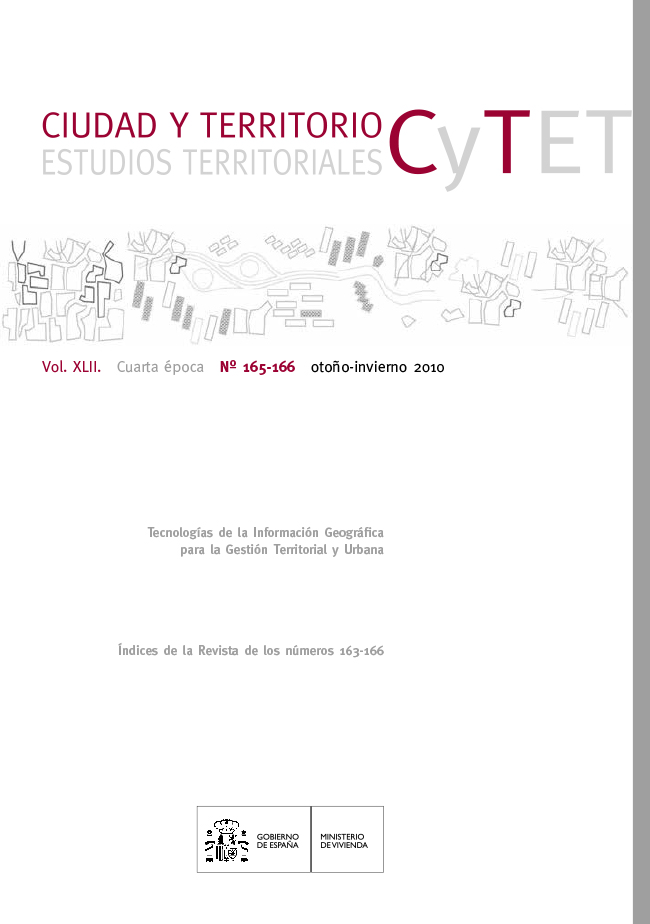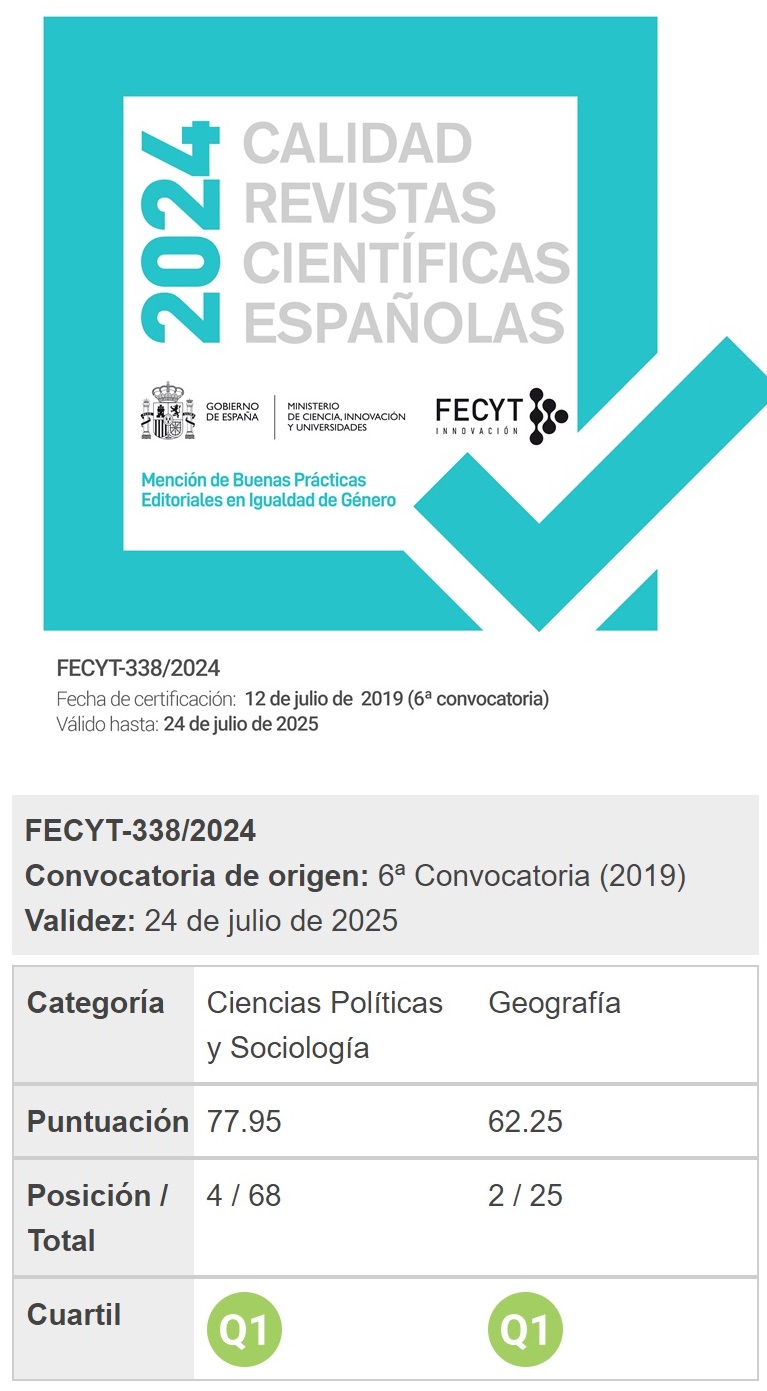Geovisualización: espacio, tiempo y territorio
Palabras clave:
Geovisualización, 3D, 4D, infraestructuras de datos espaciales, globos virtualesResumen
En este artículo se intenta realizar un recorrido por los espectaculares cambios producidos
en la geovisualización del territorio en las últimas décadas, enfatizando las aportaciones que,
para todas las disciplinas territoriales y ambientales, han supuesto las posibilidades de visualización
3D de la información geográfi ca y la incorporación de la dimensión temporal (4D) hasta llegar
a las representaciones en tiempo real de diferentes aspectos de la realidad. La masiva producción
de datos digitales sobre el territorio, la facilidad al acceso de Modelos Digitales de Terreno y/o a su
producción con nuevos sensores y fuentes de información (teledetección, Lidar, GPS, etc.), la potencia
y profusión de programas con funcionalidades 3D (SIG, CAD, etc.) y la popularización de visores
3D en Internet (globos y ciudades virtuales) ofrecen hoy nuevas perspectivas para aplicaciones territoriales
y ambientales, tanto para técnicos como para ciudadanos generalistas. Por otra parte, la
accesibilidad a datos multitemporales (servicios OGC-IDE), la profusión de datos procedentes de
sensores fi jos o embarcados en plataformas aéreas y espaciales, así como la propia información que
los ciudadanos crean en el nuevo entorno participativo de la Web 2.0, ofrecen igualmente un amplio
abanico de potenciales aplicaciones territoriales y medioambientales haciendo uso de la información
multitemporal y datos en tiempo real.
Descargas
Descargas
Publicado
Cómo citar
Número
Sección
Licencia
Derechos de autor 2010 J. Ojeda Zújar

Esta obra está bajo una licencia internacional Creative Commons Atribución-NoComercial-SinDerivadas 4.0.
Sin perjuicio de lo dispuesto en la legislación vigente sobre Propiedad Intelectual, y conforme a la misma, el/la los/las autor/a/es/as que publiquen en CyTET cede/n a título gratuito, de modo no exclusivo y sin límite temporal al Ministerio de Transportes, Movilidad y Agenda Urbana los derechos para difundir, reproducir, comunicar y distribuir en cualquier formato actual o futuro, en papel o electrónico, la versión original o derivada de su obra bajo licencia de Creative Commons Reconocimiento-NoComercial-SinObraDerivada 4.0 Internacional (CC BY-NC-ND 4.0), así como para incluir o ceder a terceros la inclusión de su contenido en índices, repositorios y bases de datos nacionales e internacionales, con referencia y reconocimiento en todo caso de la autoría del mismo.
Además, al realizar el envío, el/la los/las autor/a/es/as declara/n que se trata de un trabajo original en el que se reconocen las fuentes que han sido utilizadas en su estudio, comprometiéndose a respetar la evidencia científica y a no modificar los datos originales para verificar o refutar una hipótesis de partida; que el contenido esencial del mismo no ha sido publicado previamente ni se publicará en ninguna otra obra o revista mientras esté en proceso de evaluación en la revista CyTET; y que no se ha remitido simultáneamente a otra publicación.
Los autores deben firmar un Formulario de Cesión de Derechos, que les será enviado desde la Secretaría de CyTET una vez se acepte su artículo para ser publicado.
Con el objetivo de favorecer la difusión del conocimiento, CyTET se adhiere al movimiento de revistas de Open Access (OA) y entrega la totalidad de sus contenidos a diversos índices, repositorios y bases de datos nacionales e internacionales bajo este protocolo; por tanto, la remisión de un trabajo para ser publicado en la revista presupone la aceptación explícita por parte del autor/a de este método de distribución.
Se anima a las/os autoras/es a reproducir y alojar sus trabajos publicados en CyTET en repositorios institucionales, páginas web, etc. con la intención de contribuir a la mejora de la transferencia del conocimiento y de la citación de dichos trabajos.








 Enlace a CyTET en Linkedin
Enlace a CyTET en Linkedin